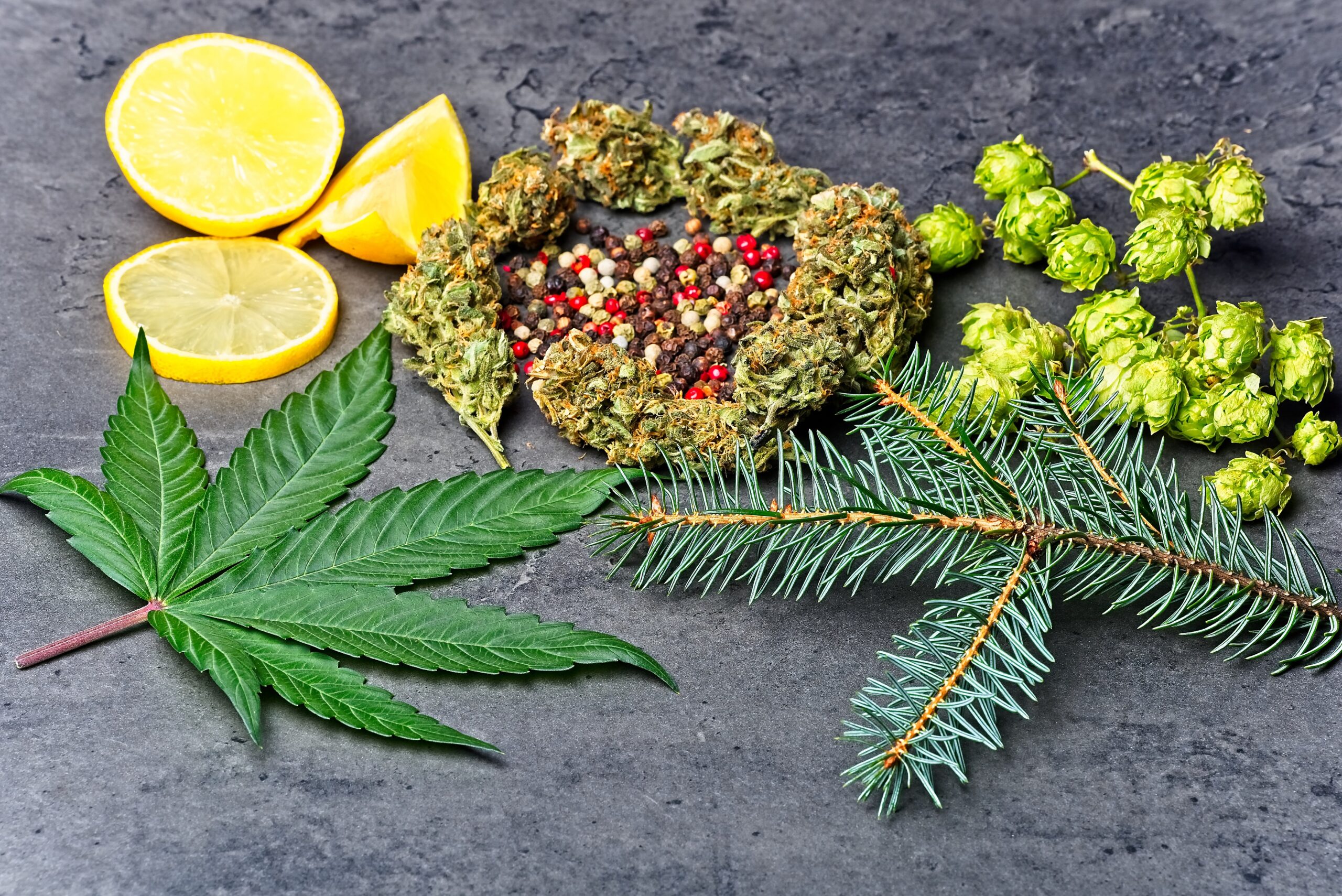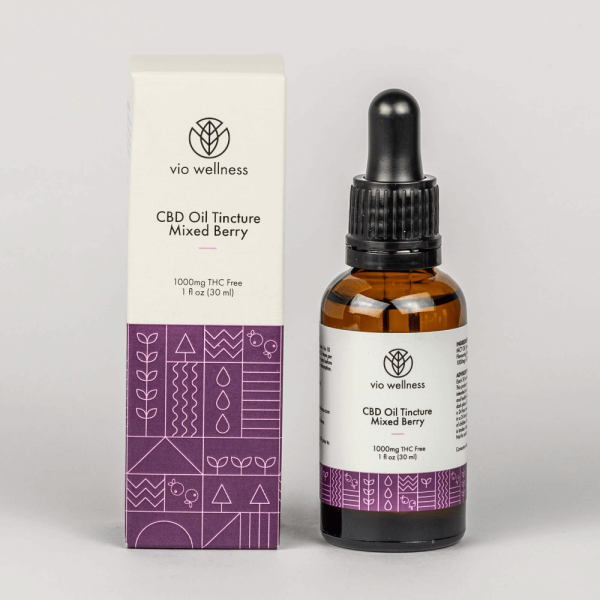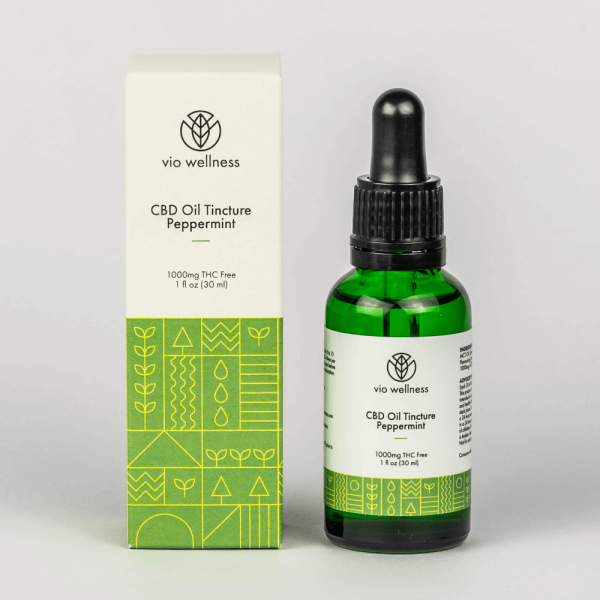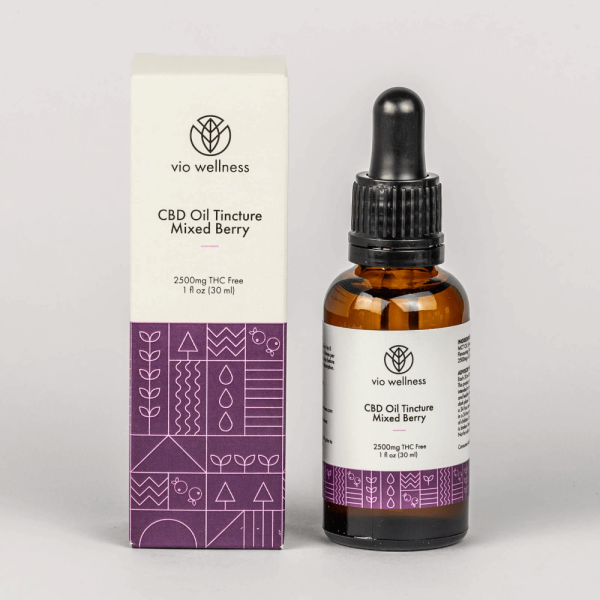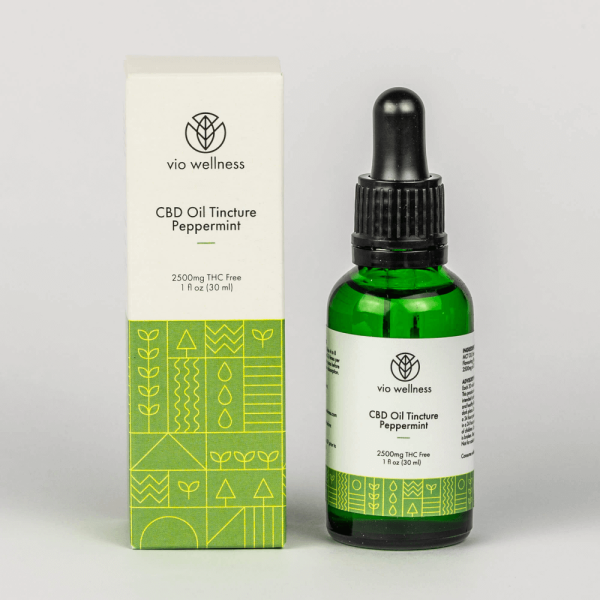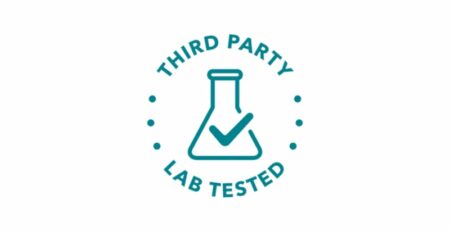What Are Terpenes: Types, Benefits, and Effects
The idea of terpenes might stump both CBD enthusiasts and novices alike. In this case, it’s likely that you have a list of questions — probably beginning with, “What are terpenes?” If your lack of terpene-related knowledge brought you here — fear not, we can help!
At CBD Village, we consider ourselves experts in the CBD industry. Because of this, we’ve put together a quick guide to terpenes. Today, we’ll tell you all about terpenes — from what they are, to how they can benefit you!
So, What Exactly Are Terpenes?
If you frequently smoke hemp flower or use a dry herb vaporiser, we’d bet that you have a favourite hemp strain. In fact, you might prefer one hemp strain over another because of its scent and flavour profile. Here’s where terpenes come into play.
Terpenes are a selection of botanical oils found in a variety of plants — mostly in herbs or fruits, among other plants. This also includes hemp plants, giving you those familiar aromas and flavours. Therefore, terpenes are completely responsible for why your favourite hemp strain smells and tastes so good.
Generally, you can find terpenes in the hemp flower’s resin glands. These glands are commonly known as the plant’s trichomes. Trichomes can also make a selection of other cannabinoids — including CBD, CBG, and CBDA. This can also include trace amounts of THC in certain strains.
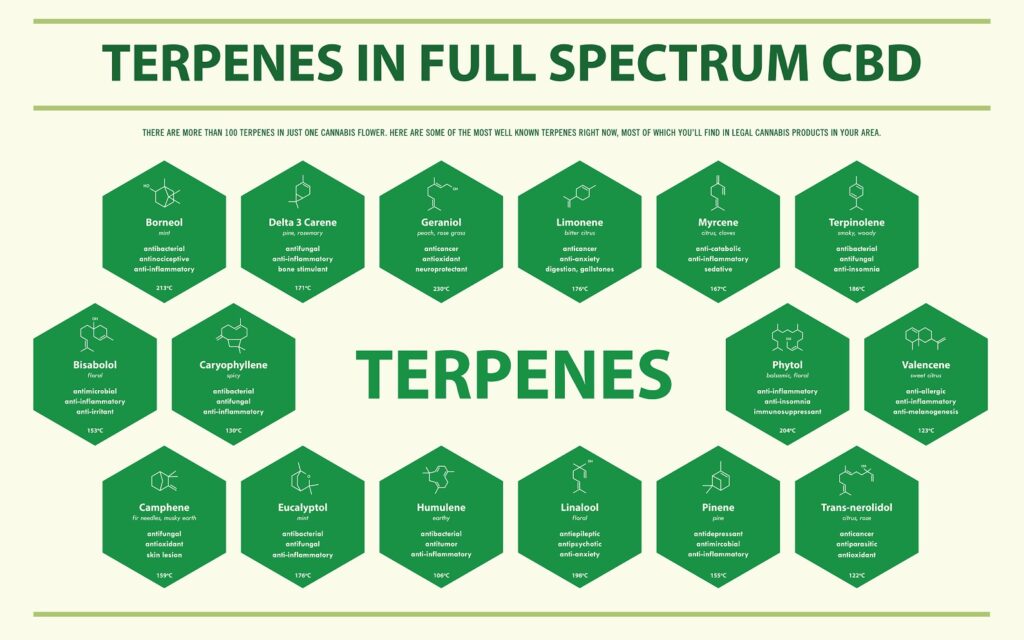
Terpenes are usually sticky, rich, and aromatic. Scientists believe that plants developed terpenes for one main reason — to attract pollinators, while fending off predators. However, upon conducting more research, scientists have managed to explore what terpenes are, in far greater detail.
In fact, scientists now believe that terpenes, when combined with CBD, could have a host of benefits. Therefore, opting for a full-spectrum CBD oil could be a great way to avail of these health-related perks.
Are Terpenes and Cannabinoids the Same Thing?
Since terpenes and cannabinoids both come from trichomes, you might think that they’re the same thing. Plus, the idea that they both have potential benefits can only add to this assumption. However, terpenes and cannabinoids are fairly different from each other — and here’s how.
First, it’s important to note that cannabinoids are exclusive to hemp and cannabis plants — for the most part, that is. In fact, there are over 120 hemp and cannabis-exclusive cannabinoids. Terpenes, however, are found in a variety of botanical species — from fruit and flowers, to herbs (and hemp, of course).
Additionally, while scientists believe that terpenes could have a number of benefits, they’re predominantly known for their scent and flavour. Conversely, cannabinoids are generally known for their potential benefits. That being said, research indicates that cannabinoids and terpenes could provide users with more effective benefits, when used together.
How Can Terpenes Benefit Me?
Like cannabinoids, terpenes could potentially benefit you via your endocannabinoid system. Scientists theorise that CBD works with your endocannabinoid system (ECS) to regulate a series of functions. These functions include:
- Appetite. Your ECS could affect how hungry you feel, and when you need to eat.
- Mood. The ECS could play a role in regulating your mood. This can include feelings of stress and anxiety.
- Pain levels. Studies show that the ECS can affect your pain levels. For example, your ECS could play a part in your experiences with chronic pain and muscle inflammation.
- Sleep. If you’re experiencing poor sleep quality, your ECS could be responsible!
Scientists theorise that CBD could play a role in stimulating the ECS. We also understand that CBD (along with other cannabinoids) work alongside the ECS to regulate these functions. Therefore, with CBD, your ECS could work better — and more smoothly.
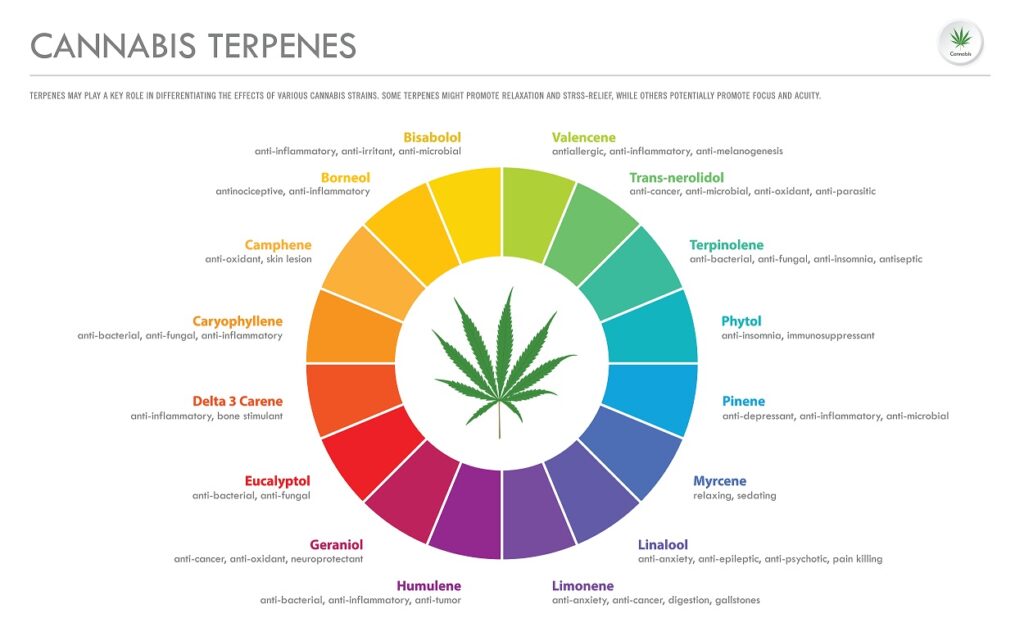
Terpenes work in a similar fashion. In fact, studies indicate that they work alongside cannabinoids, binding themselves to your ECS. This, in turn, means that you could experience the entourage effect — which is what happens when terpenes and cannabinoids work together.
It’s also important to understand that there are numerous terpenes associated with different hemp strains. Each of these terpenes could provide a number of different benefits — from calming effects to helping tackle chronic pain. Therefore, we’ll explore these terpenes in detail, allowing you to make an informed decision with your CBD consumption.
The Most Common Terpenes in Hemp Flowers Are…
At CBD Village, we want to help you make the most out of your CBD. Because of this, we’ve put together a list of the five most common (and most popular!) terpenes in hemp flowers. We’ll also tell you a little bit about what they smell like, what they’re known for, and where else you can find them.
Caryophyllene, a Spicy Delight!
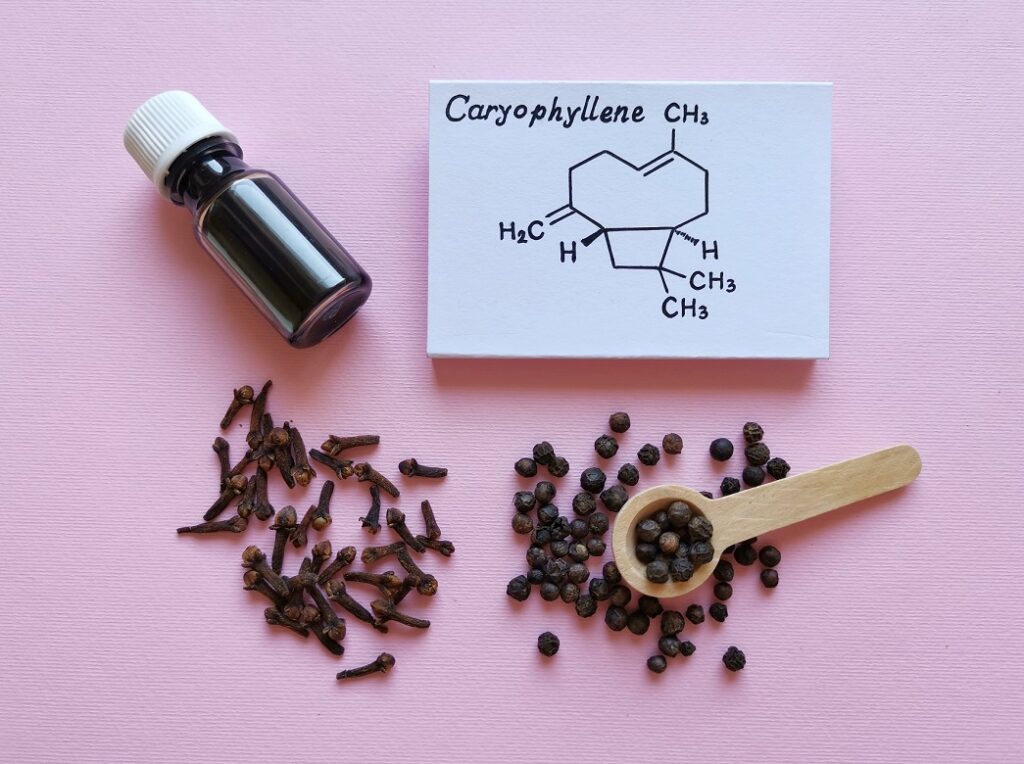
This terpene’s woody, spicy aroma is reminiscent of cloves and pepper. This is with good reason; it’s also found in cinnamon, cloves, and black pepper pods.
Scientists describe it as the only terpene that works like a cannabinoid. This is because it works with the ECS, providing our bodies with anti-inflammatories. Therefore, it could aid in ulcer-related discomfort.
Research shows that it also could potentially help with other forms of pain, as well as anxiety. When in need of an anti-inflammatory, consider trying a caryophyllene-rich hemp strain.
Linalool, a Floral Treat
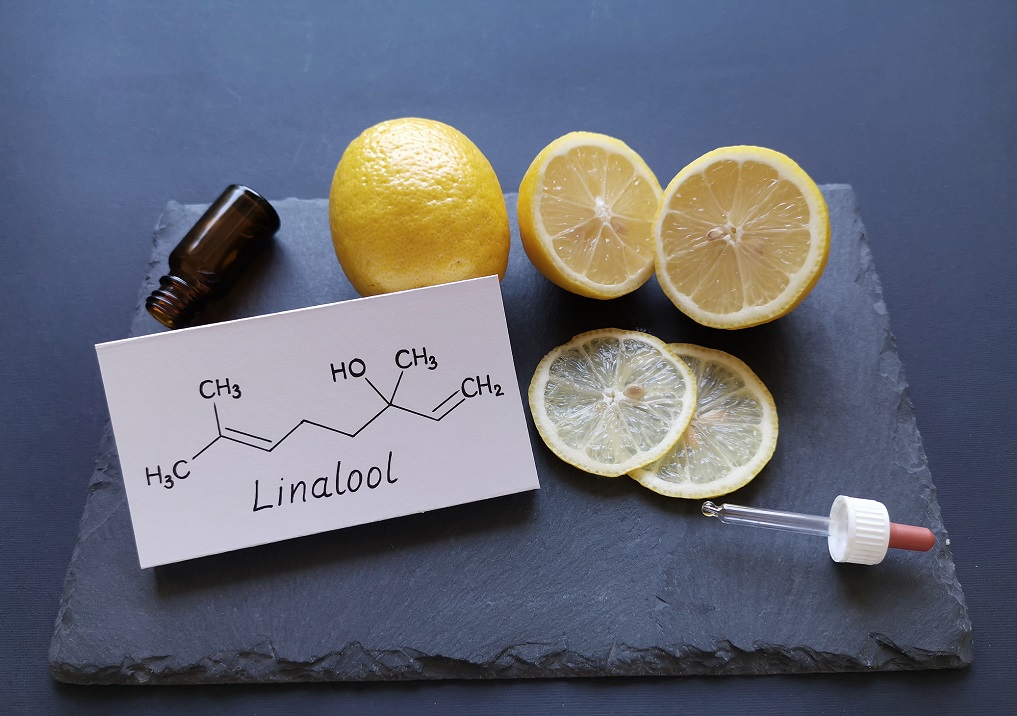
Granddaddy Purple is a king among hemp flower strains — and with good reason. Its fresh, floral scent appeals to everyone, even if it might not be your favourite strain. While its lavender scent might remind you of… well, lavender blossoms, it’s all down to linalool, another popular terpene. Incidentally, you can also find linalool in lavender flowers and birch bark.
This terpene might smell amazing, but it’s so much more than that. In fact, it’s known for potentially assisting with mood disorders, like anxiety and depression. It could also potentially help with pain management, while helping you get better sleep.
Myrcene — It’s Everywhere!
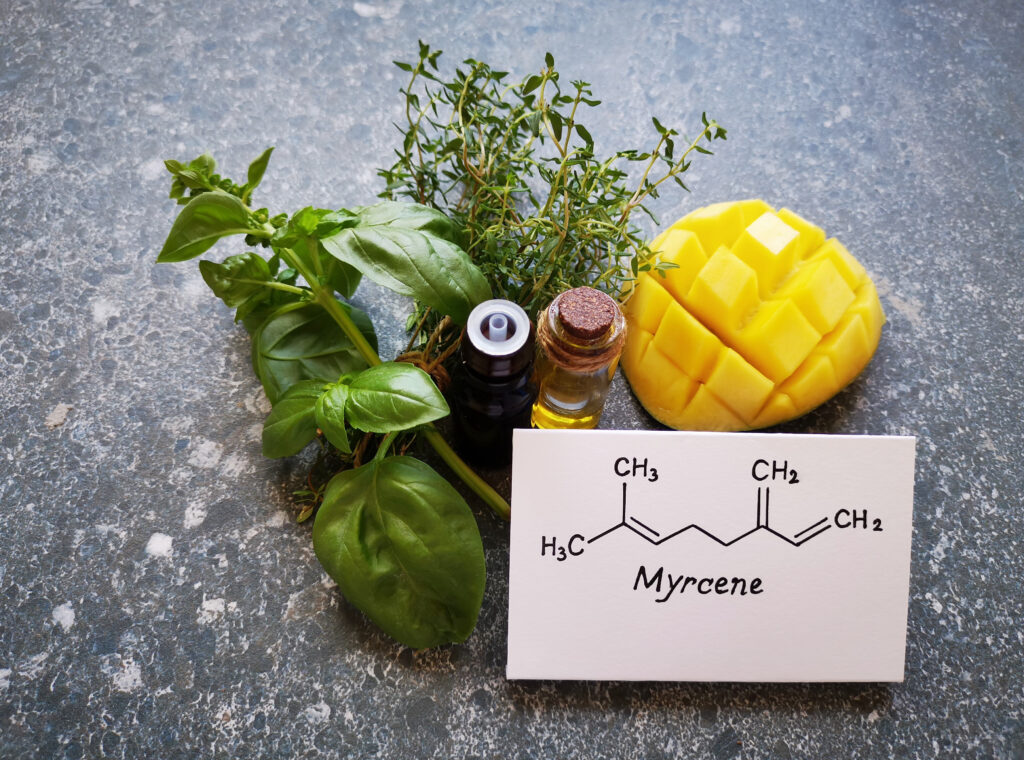
If myrcene sounds familiar to you, it’s probably because you’ve heard of it before. In fact, experts believe that it’s one of the most common modern day terpenes. This is with good reason; myrcene smells and tastes great. It also has a host of potential benefits.
Generally, myrcene emits spicy, earthy notes. These notes can include cardamom and cloves. It’s also found in fruits like mangoes, and an array of herbs like lemongrass and thyme.
Additionally, when used together with CBD, myrcene could potentially help with pain and inflammation. Furthermore, research shows that it could be high in antioxidants.
Ocimene, a Sweet, Strong Strain
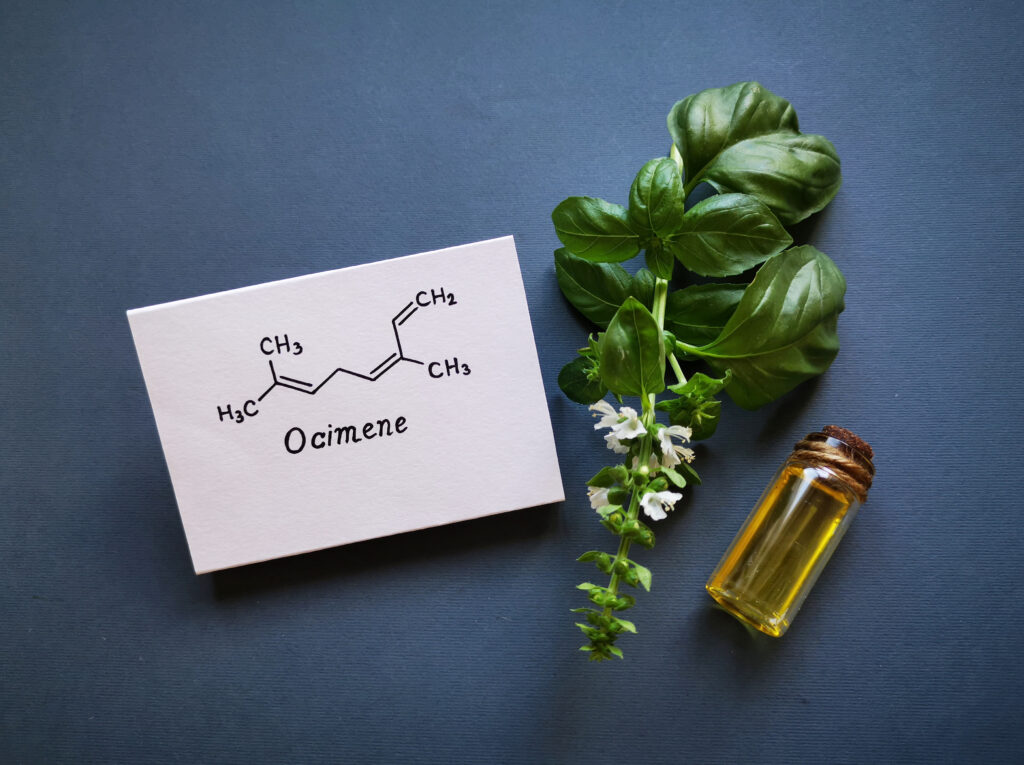
Ocimene is so fragrant that it’s often used in perfume formulations. It treats users to spicy, floral notes — mint, parsley, and orchids, to name a few. It’s also found in Amnesia, an extremely popular strain for most hemp flower enthusiasts.
Hemp flower experts often refer to ocimene as the “anti” terpene. This is because of its properties — it’s antibacterial, anti-fungal, and antiseptic. Furthermore, ocimene serves as a decongestant, making it the ideal terpene for someone with sinusitis.
Pinene — Not Just a Hemp Flower Terpene
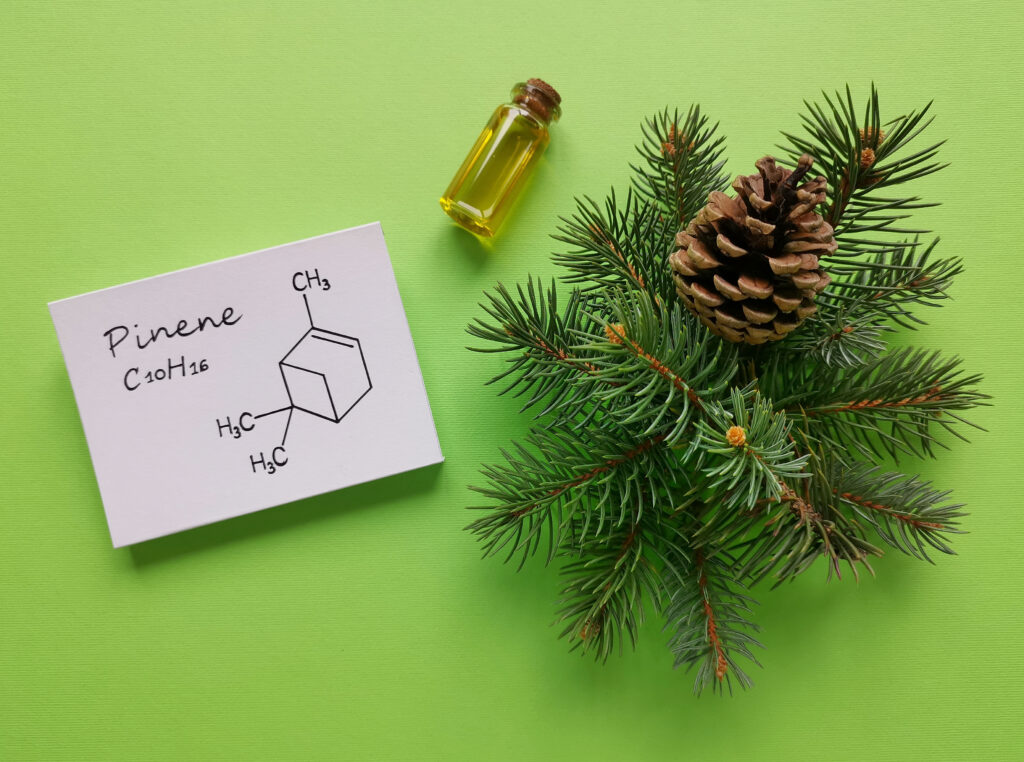
The last (but certainly not least) terpene on our list is pinene. Scientists think that pinene is the most common terpene found outside hemp flowers, and in the natural world. In fact, basil, pine needles, and rosemary all contain pinene.
Like its namesake, pinene smells strongly of pine — with sharp, refreshing notes. Research indicates that when used alongside CBD, pinene could potentially help with inflammation and ulcers. Other studies indicate that this terpene could also help with chronic pain.
I Want to Try Terpenes — How Can I Start?
Now that you know what exactly they are, you might want to try terpenes yourself. However, if you don’t smoke CBD flower, availing of its terpenes can be a little more tricky. That being said, it’s not impossible to do so.
The easiest way to do this is to use a full-spectrum CBD product. Most full-spectrum CBD options contain the full range of cannabinoids and terpenes. Therefore, with a full-spectrum option, you can enjoy everything that comes with terpenes. You can also avail of the entourage effect — a treat for your entire body.
In this case, we’d generally recommend a full-spectrum CBD product with a higher bioavailability rate. Consider trying a full-spectrum CBD tincture, which can be consumed sublingually. You could also try a CBD e-liquid — a convenient way to get a high dose of CBD.
Additionally, why not try a CBD paste? While its bioavailability rate might not be as high as other options, most CBD pastes contain a selection of terpenes. Therefore, if you’re looking for a terpene-rich option outside of smoking hemp flower, CBD pastes could be your new favourite product!
As with every other CBD product, we’d recommend that you start with small doses — especially if you’re new to CBD. By doing this, you can work your way up to higher doses, eventually finding the right full-spectrum dose for you.
However, seasoned users might already have an idea of how much CBD they can and should use. Therefore, simply choose a strength that works for you, sit back, and enjoy the entourage effect!

